Daily Business Report-Jan. 26, 2018
Rendering of Jaume Plensa’s ‘Pacific Soul’ at Bosa Development’s 41-story luxury residences.
25-Foot ‘Pacific Soul’ Sculpture to Grace Public
Plaza at Bosa Development’s Luxury Tower
“Pacific Soul,” a 25-foot sculpture by acclaimed artist Jaume Plensa, is being installed at Pacific Gate, Bosa Development’s 41-story tower in the final stages of completion at Pacific Highway and Broadway in Downtown San Diego.
The installation is scheduled to take three to four days and will be available for public and resident viewing in early 2018. “Pacific Soul” will be on display in the public plaza at Pacific Gate, Bosa’s luxury residences.
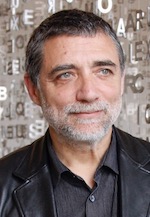
“We are passionate about elevating Downtown San Diego onto the international stage,” said Nat Bosa, president of Bosa Development. “Plensa’s ‘Pacific Soul’ will be the third public installation we have commissioned Downtown. We are confident that Plensa’s international presence in the fine arts, and the millions of people his sculptures have touched, will bring attention and visitors from the around the world.”
By combining conventional sculptural materials like glass, steel, bronze and aluminum with more unconventional media like water, light and sound, Plensa creates hybrid works of intricate energy, psychological weight, and symbolic richness. By posing numerous dualities, such as inside and outside, light and dark, and earth and sky, the artist seeks to connect his work with viewers on an intuitive level.
The building mirrors Plensa’s and the city’s marriage of creativity and technology. The 41-story oval glass tower includes two-nested curved glass towers that require as much artistry as physics. The result offers residents a different viewing experience from the ocean to the city, whereas spectators and passersby at street level will experience various perspectives depending on which angle they are viewing the building.
Plensa, who worked with Bosa Development’s fine art consultant Jody Rassell of Fine Art Services LLC, came to San Diego to tour the Port and waterfront, deciding his next Southern California installation would be at Pacific Gate.
Plensa’s West Coast public installations include Endless V (2012) in the Beverly Gardens Park in Beverly Hills, Laura and Awilda (2014) in the collection of the Palm Springs Art Museum and Echo, a monumental portrait, in the collection of the Seattle Art Museum and installed at the Olympic Sculpture Park.
Says Plensa, “Pacific Soul is inspired by the ocean, our greatest public space and a bridge which connects the world. The ocean is always in movement, always changing; we never know precisely where a drop of water will go, or where it has been before. It is filled with potential. That idea also holds true for the community of San Diego. I hope my sculpture will be an icon for the city, embracing the diverse community which is always changing yet always intrinsically connected to the ocean.”
____________________
Illumina Awarded $26.7 Million
in Patent Suit Against Ariosa
GenomeWeb
Illumina has won a patent infringement lawsuit against Roche’s Ariosa Diagnostics related to the companies’ noninvasive prenatal tests. A jury in the U.S. District Court of the Northern District of California awarded Illumina $26.7 million in damages.
According to the lawsuit, Ariosa, which Roche acquired in 2014, infringed on two patents originally held by Verinata Health, which Illumina acquired in 2013: U.S. Patent No. 8,318,430 titled “Methods of Fetal Abnormality Detection” and U.S. Patent No. 7,955,794 titled “Multiplex Nucleic Acid Reactions.”
____________________
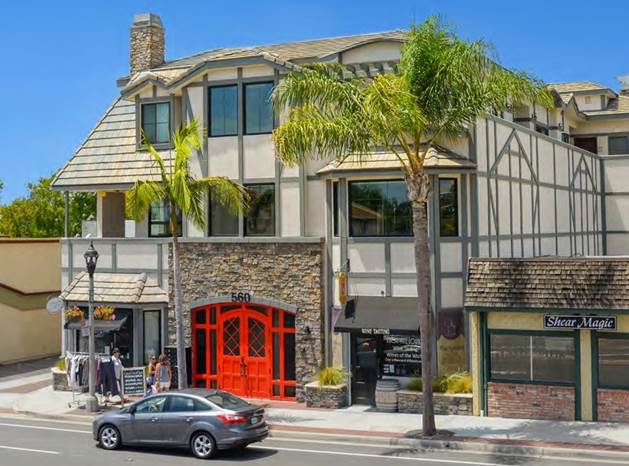
Stos Partners Sells Mixed-Use
Carlsbad Property for $8.2 Million
Stos Partners, a privately held commercial real estate investment and management firm in joint venture with a San Diego-based private equity fund, has sold a three-story, high-end, mixed-use property comprised of retail, restaurant, creative office and residential space in the Carlsbad Village submarket of San Diego, for $8.2 million. The buyer was a private family.
Constructed in 2008, the property features innovative and in-demand amenities, including a 2,000 square-foot community deck with panoramic views of the Pacific Ocean, as well as office suites with concrete floors and exposed HVAC.
The property also features two high-end penthouse residential units in the heart of Carlsbad Village, which offer single-story, ocean-view living with private two-car garages. It is located at 560 Carlsbad Village Drive and at 2975 Roosevelt Street, with entrances on both streets.
Stos Partners originally purchased the property for $6 million in July of 2016, according to CJ Stos, principal of Stos Partners.
____________________
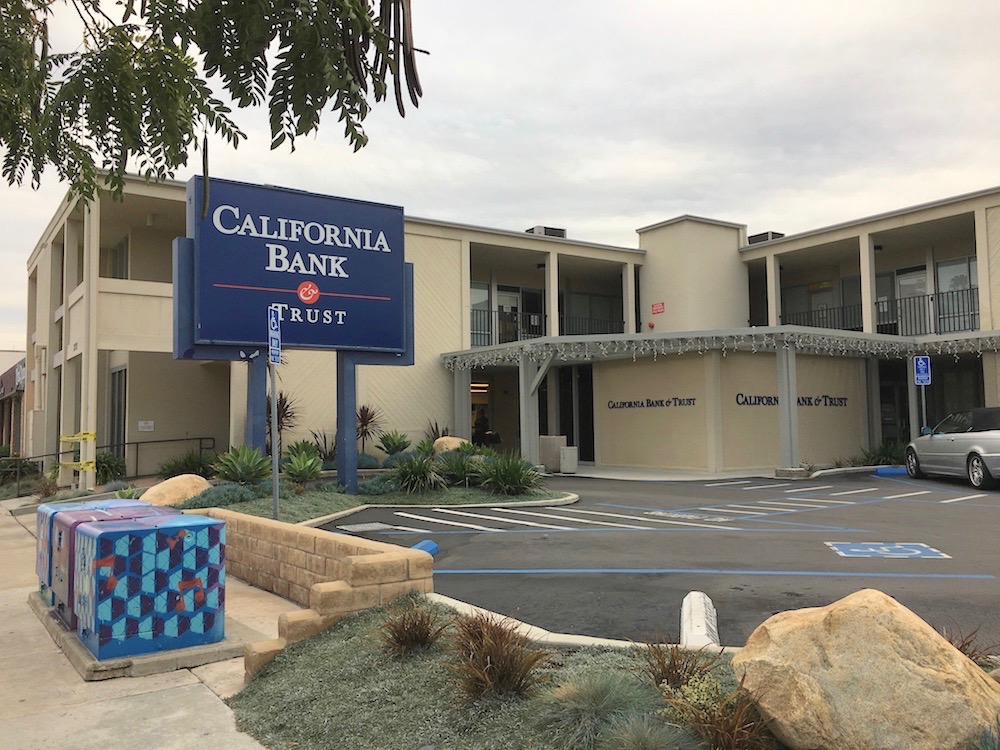
California Bank & Trust
Acquires Hillcrest Office Building
California Bank & Trust has acquired a 10,000-square-foot office building in Hillcrest for $5.1 million. The bank currently operates a bank branch in the building located at 3737 Fifth Ave.
Victor Krebs of Colliers International represented the sellers, a partnership of the Temkin, Cushman, Boner, Kattleman and Delawie Trusts. California Bank & Trust plans to continue operation of its branch at 3737 Fifth Avenue.
“This was a rare opportunity in Hillcrest as the sellers had owned the property for over 40 years,” said Krebs. “We were pleased to generate over 10 offers from developers and investors. This asset offered the opportunity to reposition the existing building or redevelop the 20,000 parcel into 50 apartments.”
____________________

Comhear Partners with Full Swing to Bring
Immersive Sound to Indoor Golf Simulators
Comhear Inc., a San Diego-based audio technology company, announced a collaboration with Full Swing to incorporate its award-winning MyBeam MBPro-12 audio technology into the company’s cutting-edge indoor golf simulators. As part of the partnership, Comhear’s MBPro-12 technology will bring immersive audio into Full Swing’s simulators, delivering a first-of-its-kind game improvement and entertainment experience, according to company officials.
Comhear’s products are powered by its patented MyBeam beamforming technology and KAP enhancement software, which provide fully immersive, 3-D audio soundscapes.
Full Swing golf simulators are used by some of the top PGA Tour pros, entertainment venues and retail locations across the country. The company said its infrared patented Dual Tracking Technology delivers superior ball tracking data, making Full Swing the only simulator that measures ball flight indoors.
According to Full Swing,Tiger Woods, Jordan Spieth, Jason Day, Jim Furyk and Padraig Harrington are just some of many professional golfers who use and endorse Full Swing Pro Series Simulators.
____________________
Cuyamaca College Names New
Vice President of Student Services
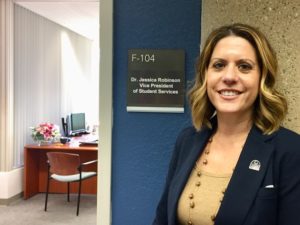
Jessica Robinson, a first-generation college student who began her higher education journey as a Cuyamaca College student some 20 years ago, is the new vice resident of student services at the Rancho San Diego campus.
“My goal has always been to go back to Cuyamaca College and help the people who were like me: first-generation students from underserved, minority populations,” said Robinson. “When I heard about this nationwide search, I jumped at the opportunity. I couldn’t be happier.”
Robinson oversees a wide array of programs and services that range from Admissions & Records to Disabled Student Programs & Services, Student Equity, and High School & Community Outreach. Her goals in her new job include forging stronger partnerships and building off what is working
After earning an associate degree at Cuyamaca College and a bachelor of arts degree in social work, a master’s degree in social work and a doctor of education in educational leadership from San Diego State University, Robinson launched a career in education at SDSU that culminated with being named as interim associate dean for academic affairs last fall.
____________________
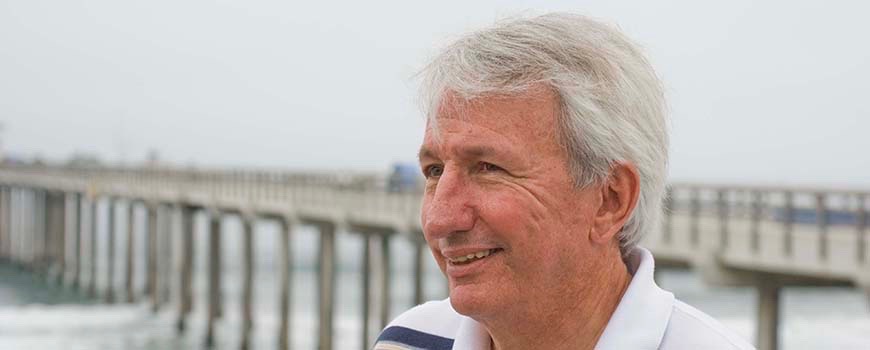
National Academy of Sciences Awards Scripps
Oceanographer for Scientific Leadership
Dean Roemmich, a distinguished professor of oceanography at Scripps Institution of Oceanography at the University of California San Diego, will receive the 2018 Alexander Agassiz Medal from the National Academy of Sciences (NAS).
The Alexander Agassiz Medal is currently presented every five years and honors original contributions in the science of oceanography. Roemmich is being recognized by NAS for “his leadership in understanding the ocean’s roles in climate variability and change.” He will receive a medal and a $20,000 prize during the NAS annual meeting on April 29 in Washington, D.C.
Roemmich is a leading expert in the general circulation of the oceans and the role of the ocean in the climate system.
____________________
General Atomics Acquires
Assets of Xagenic Inc.
General Atomics Electromagnetic Systems Group (GA-EMS) announced that it has acquired certain assets of Xagenic Inc., a Toronto, Canada-based developer of molecular diagnostic systems. The assets will be integrated into the new GA-EMS bio-sensor technology development operation located in Rancho Bernardo, to support the organization’s growth initiatives related to microelectronics, advanced sensors, and signal processing technologies for defense applications. In addition, the former chief of research and development, Graham Jack, has joined GA-EMS to lead new bio-sensor technology development activities.
Xagenic developed a diagnostic system, which uses a unique, customizable cartridge containing a proprietary sensor chip to enable rapid, lab-quality molecular diagnostics for disease detection at the point of service.
Read more…
____________________
Cubic’s GATR Satellite Antenna System
Receives Approval for Full Rate Production
Cubic Corporation announced that its Cubic Mission Solutions business division’s GATR satellite antenna systems will proceed to full rate production for the U.S. Army’s Transportable Tactical Command Communications program. The decision will enable the Army’s program office to procure and field Cubic’s GATR satellite antenna systems to Army units.
________________________________________

Gov. Jerry Brown delivered his final State of the State speech on Thursday. (Photo by Max Whittaker for CALmatters)
In His Final State of the State Speech,
Jerry Brown Remembers Where He’s From
By Laurel Rosenhall | CAL Matters
As Gov. Jerry Brown neared the end of his last State of the State speech Thursday, he invoked a name that has become a frequent theme: August Schuckman, his own great-grandfather, who left Germany in 1849 and “sailed to America on a ship named Perseverance.” The 79-year-old Democrat cast his ancestor’s journey — and the ship’s poetic name — as a metaphor for California in an era of natural disasters and deep rifts with the federal government.
“We too will persist,” he said, “against the storms and turmoil, obstacles great and small.”
Brown, delivering his 16th such speech during an unprecedented four-term tenure as California governor, contrasted California with the direction the United States is heading under Republican President Donald Trump —touting the state’s efforts to combat climate change and its embrace of Obamacare. He reiterated his commitment to two major infrastructure projects he’s long championed: a high-speed train that would eventually connect Los Angeles and San Francisco, and a massive tunnel to move water from the north end of the state to the south. And he gave an impassioned plea for legislators to look at the big picture of California’s criminal justice system instead of passing new laws in response to crimes ripped from the headlines.
Democrats praised Brown for an optimistic speech that demonstrated the hallmarks of his leadership. Even some Republicans offered mild praise: Assembly Republican Leader Brian Dahle called Brown “one of the most conservative Democrats in this place” for his relative prudence. But he criticized the governor for signing laws, like the gas tax, that raise the cost of living in California.
What Brown didn’t mention: the fact that California has the highest poverty rate in the nation, that housing prices that have skyrocketed beyond affordability for many residents, and that the state’s tax structure exposes it to perpetual cycles of boom and bust. Also absent were the obscure intellectual references that have studded his past speeches — although he did contrast the state’s bloated penal code with the Biblical 10 Commandments.
He also struck some themes that are vintage Jerry Brown. He cited California’s recent wildfires and mudslides and the Doomsday Clock, echoing past speeches in which he predicted environmental disaster. He advocated remedies to slow global warming — clean cars, renewable
energy — that resembled ideas he espoused when he was first elected governor more than four decades ago. “We should never forget our dependency on the natural environment and the fundamental challenges it presents to the way we live,” Brown said to his 2018 audience. “We can’t fight nature. We have to learn to get along with her.” Yet as he looked forward for California, he also looked back at his own family history.
When Brown was first sworn-in in 1975, he rarely talked about his ancestry. As the years mounted, however, he has increasingly turned to his family origin stories to illustrate his belief in California’s potential. Now the Brown family’s California Dream is a common trope in his rhetoric. He talks about the great-grandfather on the Perseverance, the grandmother who was the youngest of eight children, the father, Pat Brown, who preceded him in the governor’s office. Some of that reflection may be the natural consequence of age.
But it also reveals a governor more assured of his own accomplishments and less fearful that he’s riding on his father’s coattails, said political scientist Sherry Bebitch Jeffe. A professor at University of Southern California, she’s been following Brown’s career since he ran for Los AngelesCommunity College board in 1969. The younger Brown first moved into the Governor’s Office less than a decade after his father had moved out. During those first two terms in office, Jeffe said, Brown went to great lengths to distinguish himself from his father. “He did not want to live in his shadow,” she said. “Jerry wanted to build his own legacy, his own philosophy of governance.” His early speeches reflect the schism. Brown — a 37-year-old bachelor at the time, famously sleeping on a mattress on the floor of an apartment —opened his inaugural address in 1975 with a quick quip about his dad. “My father thought I wasn’t going to make it,” to become governor, he said. “But here I am.” He went on to talk about problems with environmental and land-use rules, the need to provide a better system for funding schools and farmworker rights. For the next six years, Brown used his State of the State speeches to float ideas: developing more clean energy, building more prisons, making housing more affordable, putting a satellite into space, and overhauling the bail system. Then, as now, he acknowledged the uncertainty of the future and urged lawmakers not to spend too much. But by the end of his first two terms, Brown’s 1982 State of the State speech reminisced about his father, his grandmother and his great-grandfather Schuckman who traveled the plains from St. Louis to Sacramento during the Gold Rush.
“Let me read to you from the diary that was kept during that trek westward,” Brown said then, recounted in detail their journey across deserts, through rivers and over mountains. He spoke of oxen dying of thirst and wagons going up in flames.“These were men and women who matched our mountains, and in not too many years, built these walls,” Brown said. “We are bearers of that powerful tradition. It still drives our people and the hundreds from foreign who arrive in our state each day.”
Most people assumed, of course, that 1982 speech would be Brown’s final State of the State. But after serving as Democratic Party chair, Oakland mayor and attorney general, he reclaimed the governorship in 2010. In his inaugural address, Brown again read from Schuckman’s diary. “We can only imagine what it took for August Schuckman to leave his family and home and travel across the ocean to America and then across the country —often through dangerous and hostile territory — in a wagon train. But come he did, overcoming every obstacle,” Brown said.
In 2015, Brown reflected on his father’s leadership in ways he never did in those speeches during his early years as governor.“ The issues that my father raised at his inauguration bear eerie resemblance to those we still grapple with today: discrimination; the quality of education and the challenge of recruiting and training teachers; the menace of air pollution, and its danger to our health; a realistic water program; economic development; consumer protection; and overcrowded prisons,” Brown said. “So you see, these problems, they never completely go away. They remain to challenge and elicit the best from us.”
Whatever challenges lie ahead for 2018 and beyond, Brown said on Thursday “All of us — whatever our party or philosophy — have a role in play in defending and advancing our democracy. Our forebears set the example.”
Now he’s planning retirement on the rural land in Colusa Countywhere Schuckman settled in the 1800s. Though Brown’s upbringing is very different from most Californians, his family stories can make the austere governor more relatable, said Roger Salazar, a Democratic political consultant who works for the Legislature’s Latino Caucus. “It’s a story that I think a lot of legislators can relate to,” Salazar. “When you look back at your familial history and the context in which they came to California, I think that’s something that we all can connect with.”
CALmatters.org is a nonprofit, nonpartisan media venture explaining California policies and politics.


